#Studio Museum in Harlem
Text
Thelma Golden: A Visionary Leader in Art and Culture
Artcentron celebrates Thelma Golden, winner of the prestigious Gish Prize for providing space and support for creative minds.
Artcentron celebrates Thelma Golden, winner of the prestigious Gish Prize for providing space and support for creative minds.
BY KAZEEM ADELEKE, ARTCENTRON
NEW YORK, NY–In the vibrant landscape of New York’s art scene, Thelma Golden stands as a beacon of inspiration. Recently awarded the prestigious Dorothy and Lillian Gish Prize, Golden adds another accolade to her illustrious career as the…
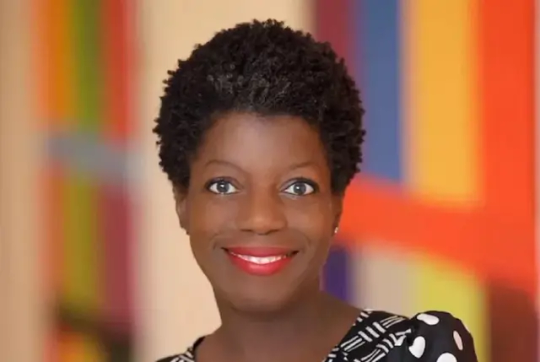
View On WordPress
0 notes
Text


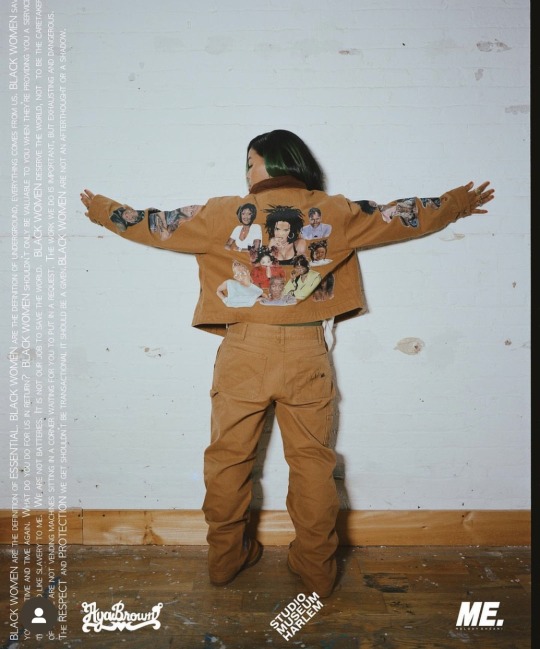
89 notes
·
View notes
Photo

Senga Nengudi, RSVP Performance Piece, (gelatin silver print), [Woods Gallery, Los Angeles, CA, 1977; Activators: Maren Hassinger, Senga Nengudi; Photograph by Harmon Outlaw], 1978 [The Studio Museum in Harlem, New York, NY. Centre Pompidou, Paris. Denver Art Museum, Denver, CO. © Senga Nengudi, Harmon Outlaw]
#art#performance#dance#photography#senga nengudi#maren hassinger#harmon outlaw#woods gallery#the studio museum in harlem#centre pompidou#denver art museum#1970s
42 notes
·
View notes
Text
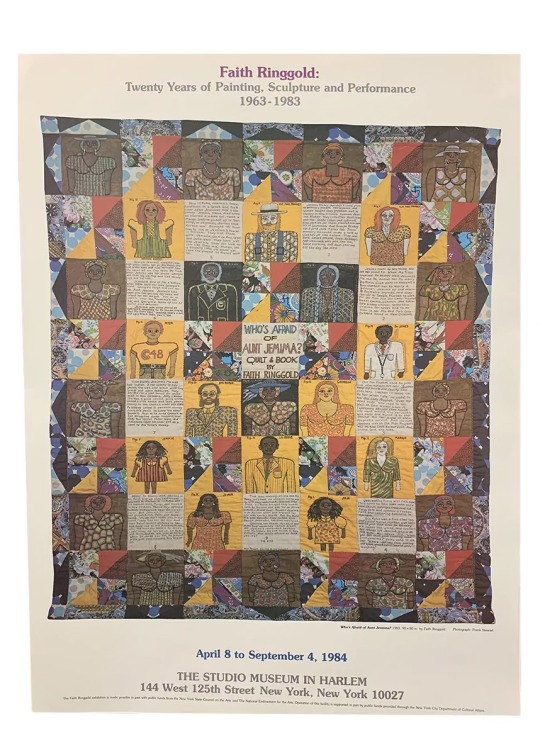
11 notes
·
View notes
Link
#when you think for sure you'd reblogged something and spend forever looking for it in your archives#there was a time on this site when yinka shonibare's work was everywhere#guess that time was circa 2010 huh#yinka shonibare#message in a bottle#nelson's ship in a bottle#sculpture#textile art#colonialism#installation art#studio museum#harlem
4 notes
·
View notes
Text

The inaugural class of the Studio Museum in Harlem's Arts Leadership Praxis program from left to right: Dejá Belardo, Margarita Lila Rosa, Tsige Tafesse, Carla Forbes, Meredith Breech, Gee Wesley, Imani Williford, and Jenée-Daria Strand (photo by Naima Green, courtesy the Studio Museum in Harlem)
0 notes
Text
Thelma Golden from the Studio Museum
0 notes
Text


We mourn the loss and celebrate the life of Faith Ringgold (1930-2024). A painter, mixed media sculptor, performance artist, activist, writer, teacher and lecturer, Ringgold’s impact on American art cannot be understated, and her legacy is especially felt in New York City. Born in Harlem, Ringgold attended City College for both her B.S. and M.A. degrees in visual art before travelling the world, which would inform the rich narratives in her work and the development of her iconic story quilts. She revolutionized notions of craft in fine art with her unique style of narrative quilt paintings while centering African American and feminist voices. The distinguished artist received more than 80 awards and 23 Honorary Doctorates throughout her prolific career. Ringgold’s work has been exhibited internationally and belongs in the collections of numerous institutions including the Brooklyn Museum, the Metropolitan Museum of Art, the High Museum of Art, the Studio Museum in Harlem, and the National Gallery of Art in Washington, D.C.
Ringgold’s mosaic artwork “Flying Home: Harlem Heroes and Heroines (Downtown and Uptown)” (1996) at 125 St (2,3) station honors Harlem notables and makes them fly. Ringgold has said of the work: "I love every one of these people. I wanted to share those memories, to give the community - and others just passing through - a glimpse of all the wonderful people who were part of Harlem. I wanted them to realize what Harlem has produced and inspired." Faith Ringgold herself is certainly a Harlem heroine who has inspired and will inspire many for years to come.
📸1: MTA A&D/Cheryl Hageman, 2: Trent Reeves
75 notes
·
View notes
Text
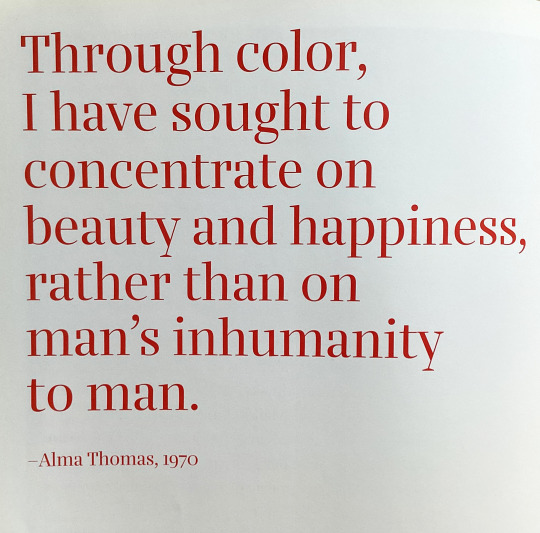

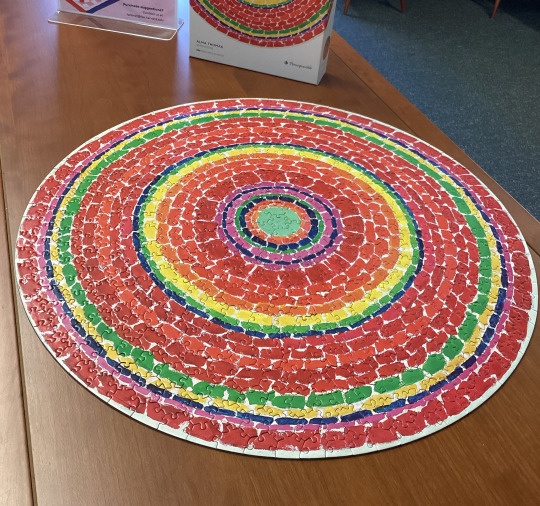
Now recognized as a major American painter of the 20th century, Alma Thomas (1891-1978) is best known for her colorful abstract paintings. Thomas believed in creating beautiful work. She said:
“I’ve never bothered painting the ugly things in life. People struggling, having difficulty. You meet that when you go out, and then you have to come back and see the same thing hanging on the wall. No. I wanted something beautiful that you could sit down and look at. And then, the paintings change you.” –– Alma Thomas, ca. 1977–78
Besides many books on the artist, the Fine Arts Library also has an Alma Thomas puzzle! When you get tired of studying, or just feeling tired of seeing too many ugly things in the world, come to the library, and let your mind go by looking at this colorful puzzle. You can also borrow it and take it home with you!
Image 1: “Through color, I have sought to concentrate on beauty and happiness, rather than on man’s inhumanity to man.” –– Alma Thomas, 1970
Image 2: Color photograph of Alma Thomas in the studio
Image 3: Completed Alma Thomas puzzle at the Fine Arts Library
Alma Thomas
New York, New York : The Studio Museum in Harlem ; Saratoga Springs, New York : The Frances Young Tang Teaching Museum and Art Gallery at Skidmore College ; Munich : DelMonico Books/Prestel, 2016.
HOLLIS number: 990148627750203941
Alma Thomas in Her Studio
Color photography
Columbus Museum, Columbus (Muscogee, Georgia, United States) (inhabited place)
HOLLIS number: 8001685875
The second image is part of FAL’s Digital Images and Slides Collection (DISC), a collection of images digitized from secondary sources for use in teaching and learning. FAL does not own the original artworks represented in this collection, but you can find more information at HOLLIS Images.
#AlmaThomas#Photography#Painting#AbstractPainting#Beauty#Puzzle#ArtPuzzle#Portrait#Blackartist#Blackwomenartist#Blackhistorymonth#HarvardFineArtsLibrary#Fineartslibrary#Harvard#HarvardLibrary#Digitalimage
46 notes
·
View notes
Photo
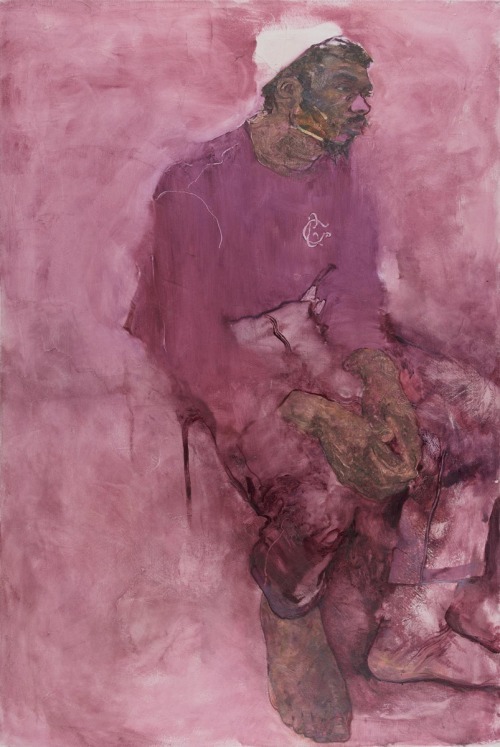
Jennifer Packer ( b. 1984 ) Ivan, 2013. Oil on canvas, 36 × 24 × 1 in. The Studio Museum in Harlem; Museum purchase with funds provided by the Acquisition Committee.
81 notes
·
View notes
Text
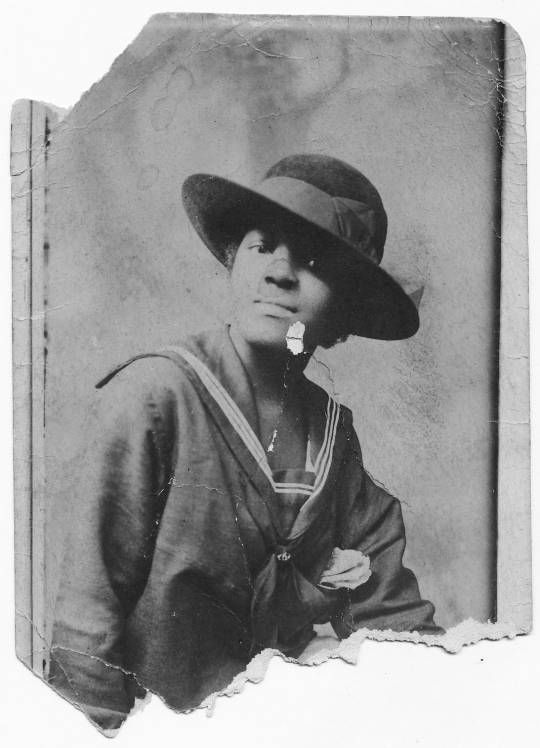

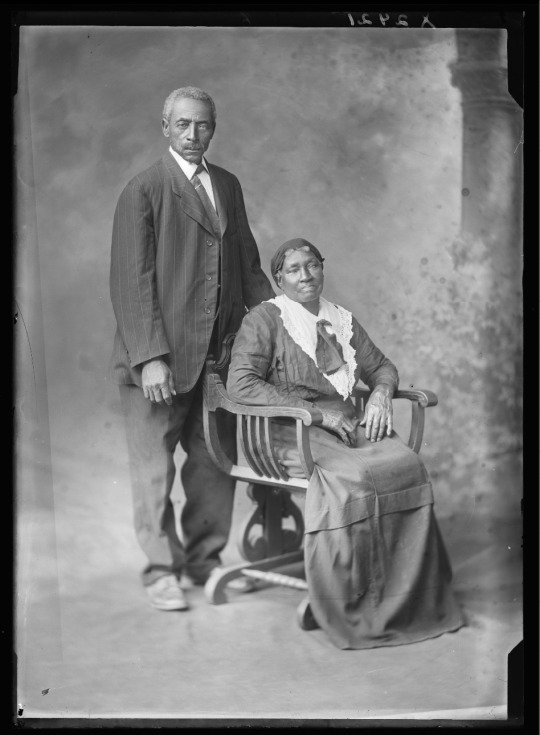
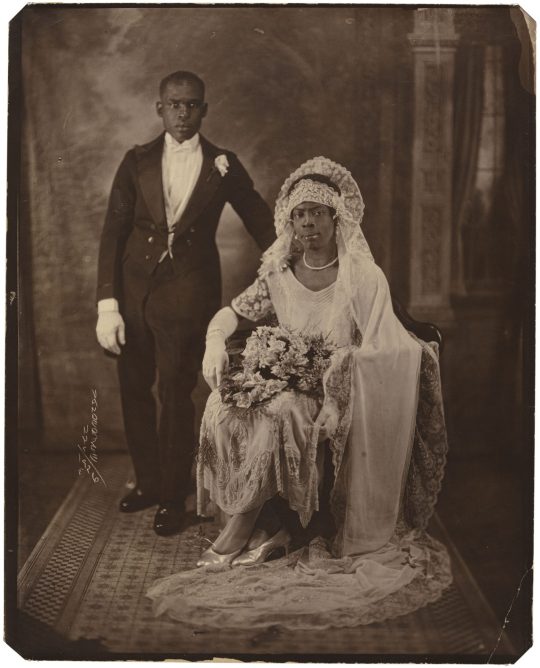

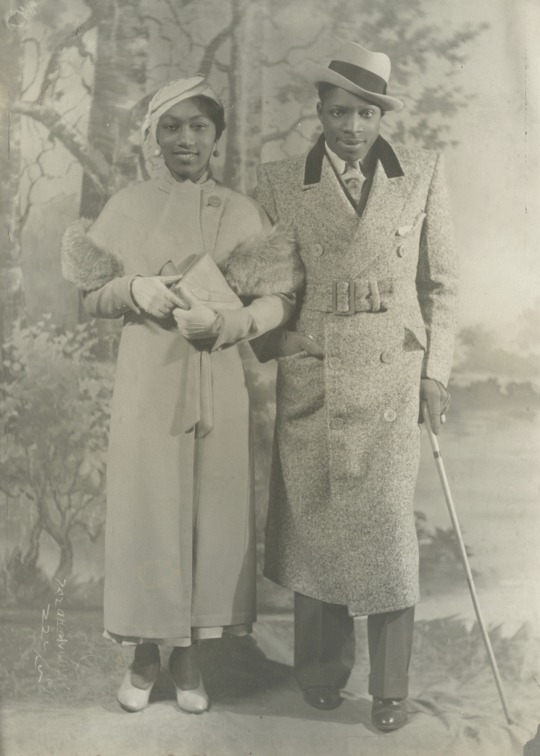


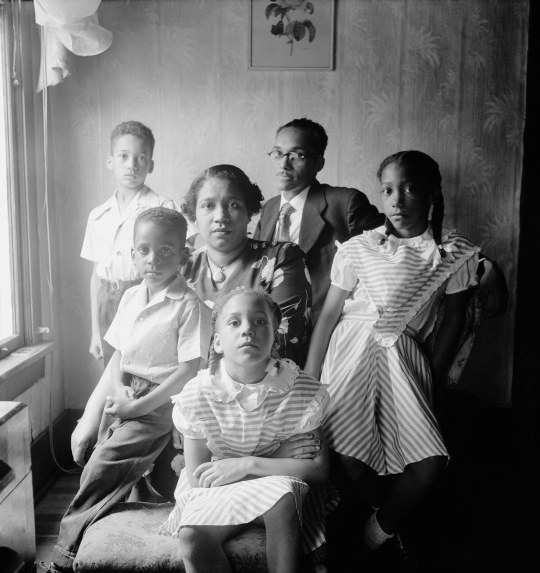



(1) Queer domestic worker and jazz lover Mabel Hampton (1919)
(3) Annie Bell and Sammie Pratt (1905)
(4) Mr. and Mrs. Joe Spears (1914)
(5) Bride and Groom (1926)
(6) William Biggers and his family (1916)
(7) A well-dressed couple strolling together (1925)
(8) A stylish New York couple in Harlem (1932)
(9) Lorraine Hurdle, a Black lesbian, posed in her United States Women’s Army Corps (WAC) uniform alongside a bespeckled lady friend during World War II
(10) A Family Portrait in Fort Scott, Kansas (1950)
(11) The wedding of transgender essayist Dawn Pepita Hall and her husband, auto-mechanic John Paul Simmons (1969)
(12) A couple shares a kiss inside a photo booth (1930s-40s)
(13) Two men share a kiss under a tree (1977-78)
Special Love to the Holsinger Collection, KyKy Archives, James Van Der Zee Studio, Mabel Hampton Collection, and the National Museum of African American History and Culture
#for my afrofolio of period dramas#black history month#black people are everywhere#always have been#valentine's day#our history is your history#queer topics
17 notes
·
View notes
Text



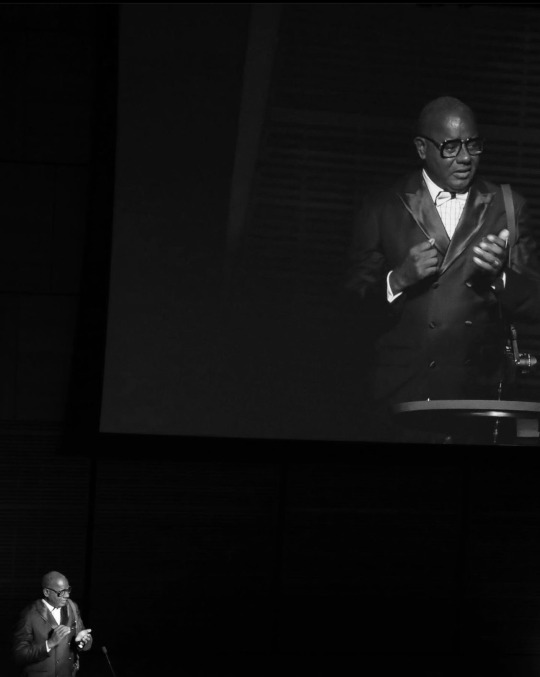
What an EPIC night, Brother Jamel Shabazz received the prestigious @luciefoundation Award presented by Peter Kunhardt, Jr. Executive Director for The Gordon Parks Foundation at Carnegie Hall… So well deserved.
Jamel Shabazz is best known for his iconic photographs of New York City during the 1980s. A documentary, fashion, and street photographer, he has authored 12 monographs and contributed to over three dozen other photography related books.
His photographs have been exhibited worldwide and his work is housed within the permanent collections of The Whitney Museum, The Brooklyn Museum, The Studio Museum in Harlem, The Smithsonian’s National Museum of African American History and Culture, The Fashion Institute of Technology, The Art Institute of Chicago and the Getty Museum.
Over the years, Shabazz has instructed young students at the Studio Museum in Harlem’s “Expanding the Walls” project, The Schomburg Center for Research in Black Culture “Teen Curator’s” program, and the Bronx Museum’s “Teen Council.” He is also the 2018 recipient of the Gordon Parks award for excellence in the arts and humanitarianism and the 2022 awardee of the Gordon Parks Foundation/Steidl book prize. His goal as an artist is to contribute to the preservation of world history and culture.
It is an honor to collaborate with Brother Jamel Shabazz on the @albeesquaremall book that has been years in the making.
Another one of Brooklyn’s Finest 👑🏆🫡 @jamelshabazz
CARTER™️ Magazine
#carter magazine#carter#historyandhiphop365#wherehistoryandhiphopmeet#history#cartermagazine#today in history#staywoke#blackhistory#blackhistorymonth#jamel shabazz
31 notes
·
View notes
Text
I really, really hope for people more qualified than me to talk about:
how Hozier and Sufjan Stevens owe a lot of their artistic inspiration and connections integral to their music, to the Black artists they were in relationships with.
I don't personally do the Hozier lifestyle lmao but I know it's been discussed. I haven't really seen people start conversations around Sufjan's recently passed Black life partner for more than a decade, Evans Richardson, being the Chief of Staff at the Studio Museum in Harlem and knowing some of the key musicians Sufjan has worked with. He was an intensely artistic human who deserved more of the world than what he got.
47 notes
·
View notes
Photo

Senga Nengudi, RSVP Performance Piece, (gelatin silver print), [Woods Gallery, Los Angeles, CA, 1977; Activators: Maren Hassinger, Senga Nengudi; Photograph by Harmon Outlaw], 1978 [The Studio Museum in Harlem, New York, NY. Centre Pompidou, Paris. Denver Art Museum, Denver, CO. © Senga Nengudi, Harmon Outlaw]
#art#performance#dance#photography#senga nengudi#maren hassinger#harmon outlaw#woods gallery#the studio museum in harlem#centre pompidou#denver art museum#1970s
44 notes
·
View notes
Text

Beauford Delaney
Portrait of a Young Musician, 1970
The Studio Museum in Harlem
39 notes
·
View notes
Text
The Black Woman Artist Who Crafted a Life She Was Told She Couldn’t Have
The sculptor Augusta Savage at work in her studio in Harlem.
At the dawn of the Harlem Renaissance, Augusta Savage fought racism to earn acclaim as a sculptor, showing her work alongside de Kooning and Dalí. But the path she forged is also her legacy.
By Concepción de León
Published March 30, 2021
In 1937, the sculptor Augusta Savage was commissioned to create a sculpture that would appear at the 1939 New York World’s Fair in Queens, N.Y. Savage was one of only four women, and the only Black artist, to receive a commission for the fair. In her studio in Harlem, she created “Lift Every Voice and Sing,” a 16-foot sculpture cast in plaster and inspired by the song of the same name — often called the Black national anthem — written by her friend, James Weldon Johnson, who had died in 1938.
The sculpture was renamed “The Harp” by World’s Fair organizers and exhibited alongside work by renowned artists from around the world, including Willem de Kooning and Salvador Dalí. Press reports detail how well the piece was received by visitors, and it’s been speculated that it was among the most photographed sculptures at the Fair.
But when the World’s Fair ended, Savage could not afford to cast “The Harp” in bronze, or even pay for the plaster version to be shipped or stored, so her monumental work, like many temporary works on display at the Fair, was destroyed.
The story of the commission and destruction of “The Harp” and its eventual fate is a microcosm of the challenges Savage faced — and the ones Black artists dealt with at the time and are still dealing with today. Savage was an important artist held back not by talent but by financial limitations and sociocultural barriers. Most of Savage’s work has been lost or destroyed but today, a century after she arrived in New York City at the height of the Harlem Renaissance, her work, and her plight, still resonate.
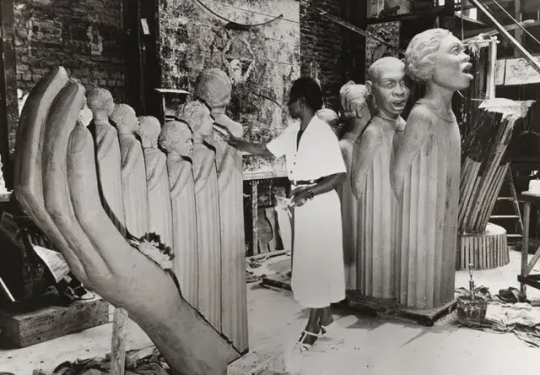
Augusta Savage at work on the sculpture that would become known as “The Harp.” Credit... via The New York Public Library
“Disagreeable complications”
Savage, born Augusta Christine Fells in Green Cove Springs, Fla., in 1892, was the seventh of 14 children. She started making animal sculptures from clay as a child, but her father strongly opposed her interest in art. Savage once said that he “almost whipped all the art out of me,” according to the Smithsonian American Art Museum.
Savage arrived in Harlem a century ago in 1921 in the early years of the Harlem Renaissance. She was nearly 30; had already been twice married, widowed and divorced; and had a teenage child, Irene, whom she left in the care of her parents in Florida. She applied and was accepted to the Cooper Union art school, and completed the four-year program in three years. She took the surname Savage from her second husband, whom she divorced. In 1923, she married Robert L. Poston, her third and final husband. Poston died a year later.
The year she married Poston, Savage was one of 100 women awarded a scholarship to attend the Fontainebleau School of Fine Arts in Paris. But when the admissions committee realized that it had selected a Black woman, Savage’s scholarship was rescinded.
In a letter explaining the decision, the chairman of Fontainebleau’s sculpture department, Ernest Peixotto, expressed concern that “disagreeable complications” would arise between Savage and the students “from the Southern states.”
Savage did not accept the rejection quietly. “She used the Black press to make the limits that she was facing known to the larger national and international public,” Bridget R. Cooks, an art historian and associate professor at University of California, Irvine, said. “She had a real determination and sense of her own talent and a refusal to be denied.”
In the years after the Fontainebleau episode, Savage was commissioned to create busts for prominent African-American figures such as the sociologist and scholar W.E.B. Du Bois and the Jamaican activist Marcus Garvey. She also created “Gamin,” a painted plaster bust portrait based on her nephew that became one of her most well-known pieces, praised for its expressiveness. (It was later cast in bronze.)
“Gamin” earned her a Julius Rosenwald fellowship in 1929 to travel to Paris, which had become a refuge for Black artists, including the painter Palmer Hayden and the sculptor Nancy Elizabeth Prophet. Savage studied at the Académie de la Grand Chaumière and had works displayed at the Grand Palais and other prominent venues.
When she returned to Harlem in 1932, she opened the Savage Studio of Arts and Crafts, where she taught prominent artists such as Jacob Lawrence, Gwendolyn Knight, Norman Lewis and Kenneth B. Clark. Clark later turned to social psychology and developed, with his wife Mamie, experiments using dolls to show how segregation affected Black children’s self-perception.
The community-driven education that Savage championed is part of the African-American tradition, Dr. Cooks said, because Black people have historically been excluded from formal academic spaces. “But for her to open her own school is something entirely different,” Dr. Cooks added. “That is becoming a business person. That’s taking on a leadership role for which she doesn’t have any models in terms of Black people in the art world and Black women in particular. ”
In 1934, Savage became the first African-American member of the National Association of Women Painters and Sculptors (now the National Association of Women Artists). In 1937, she worked with the W.P.A. Federal Art Project to establish the Harlem Community Art Center and became its first director. Eleanor Roosevelt, who attended its inauguration, was so impressed with the center that she used it as a model for other arts centers across the country.

Gwendolyn Bennett, Sara West, Louise Jefferson, Augusta Savage and Eleanor Roosevelt in 1937. Credit... The New York Public Library/Schomburg Center
“She created a pathway for careers for Black artists,” Tammi Lawson, the curator of the art and artifacts division of the Schomburg Center, which has the largest holding of Savage’s work, said. “She taught them, she gave them the tools, and she got them work.”
Sandra Jackson-Dumont, the director and chief executive officer of the Lucas Museum of Narrative Art in Los Angeles, agrees. “She, for me, represents someone who believed that she wasn’t compromising her studio practice or who she was by teaching and bringing people along,” said Ms. Jackson-Dumont, adding that Savage understood “how to use the system’s resources to catalyze folks.”
Yet the later years of Savage’s artistic career were marked by adversity. After taking a hiatus to work on her sculpture for the World’s Fair, Savage returned to the Harlem Community Art Center to find that her job had been filled. She briefly tried to establish the Salon of Contemporary Negro Art in Harlem in 1939, but the gallery lasted only three months.
“Joe Gould’s Teeth,” a 2016 book by the historian Jill Lepore, revealed archival evidence that Gould, an eccentric writer, had harassed Savage by calling her incessantly, insulting her, following her to parties and telling people she had agreed to marry him. In the early 1940s, Savage abruptly left her home in Harlem for a farmhouse in Saugerties, N.Y., in the Catskill Mountains, where she continued to make busts and teach local children. In Harlem, the community art center she had founded was closed in 1942 when federal funds were cut during World War II.
Savage remained in Saugerties until Gould died in 1957 and she only later returned to Harlem. She died in relative obscurity in March 1962 of cancer, at 70.
“A blueprint for what it means to be an artist that centers on humanity”
Jeffreen Hayes, who is now a curator and the executive director of Threewalls, an arts nonprofit in Chicago, was a graduate student at Howard University when she learned about Augusta Savage’s work. A professor mentioned the sculptor in passing during a section on the Harlem Renaissance.
“I remember my professor showing slides of Augusta Savage,” Dr. Hayes said, “and then we just kind of moved on.”
Dr. Hayes, though, was struck by this story of a resilient Black woman whose greatest works have been lost but who made a life as an artist, teacher, arts center director and community organizer against the backdrop of Jim Crow laws and the Great Depression.
“I don’t think about Augusta Savage as someone who only made objects,” Dr. Hayes said, but rather as someone who “has really left behind a blueprint of what it means to be an artist that centers humanity.”
In 2018, Dr. Hayes curated the exhibition “Augusta Savage: Renaissance Woman” at the Cummer Museum in Jacksonville, Fla., which aimed, according to the catalog, to “reassess Harlem Renaissance artist Augusta Savage’s contributions to art and cultural history in light of 21st-century attention to the concept of the artist-activist.”
“Savage’s artistic skill was widely acclaimed nationally and internationally during her lifetime,” the catalog reads, “and a further examination of her artistic legacy is long overdue.”
At a moment when discourse has centered on the artistic and political role of public art and monuments, the continuing absence of a work like “The Harp” becomes even more acute.
After the Civil War, as cities evolved in the 19th and 20th centuries, sculptors formed close alliances with architects, such that parks, town squares and other public spaces were designed with sculptures in mind. Unlike paintings, which are typically housed in museums, sculptures and monuments hold an outsized symbolic value because of their presence in public life.
“Your public art should align with a community’s values,” said James Grossman, the executive director of the American Historical Association. “Every generation, each state should step back and say, maybe it’s time for somebody else” to be honored.

Savage with her sculpture “Realization” in 1938. Credit... Andrew Herman, via The New York Public Library/Schomburg Center
In assessing “Augusta Savage: Renaissance Woman,” the Times art critic Roberta Smith noted of another Savage sculpture titled “Realization”: “It never made it beyond its forcefully modeled nearly life-size clay version. It’s heartbreaking to think the difference its survival might have made.”
Recently, in the context of questions over Confederate monuments, there have been calls to recreate Savage’s “The Harp” and display it at the National Museum of African American History and Culture in Washington.
Savage viewed her own legacy with humility, putting the emphasis on the success of her students. In a 1935 interview in Metropolitan Magazine, she said, “I have created nothing really beautiful, really lasting, but if I can inspire one of these youngsters to develop the talent I know they possess, then my monument will be in their work.”
Dr. Cooks said she “would disagree” with Savage’s assessment of her own work; “I think everybody would,” she added. For Dr. Cooks, it’s clear that Savage saw her legacy as “someone who could set up opportunities for other people who were younger than her, to have the space to build a Black infrastructure, essentially, so they could succeed.”
In this sense, Savage’s legacy lies as much in the life she built for herself as in the work she made for the world, as evidenced in surviving film of Savage guiding students or creating sculpture in her studio.
In her work at Threewalls, Dr. Hayes said she aims to honor Savage’s mission: to “build a larger ecology that intentionally builds a relationship with community,” as Dr. Hayes put it.
Dr. Hayes didn’t have the support of people like Savage to guide her in the art world early on. “I feel really good that I can pass on that wisdom to the next generation coming up,” she said.
A correction was made on:
March 31, 2021
An earlier version of this article misstated the surname of the director and chief executive officer of the Lucas Museum of Narrative Art in Los Angeles. She is Sandra Jackson-Dumont, not Dumont-Jackson.
A correction was made on
April 5, 2021
An earlier version of this article misstated the year of Joe Gould's death. He died in 1957, not 1954.
When we learn of a mistake, we acknowledge it with a correction. If you spot an error, please let us know at [email protected].
10 notes
·
View notes